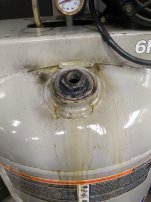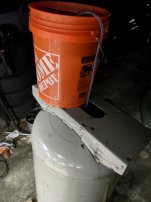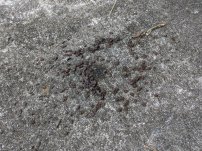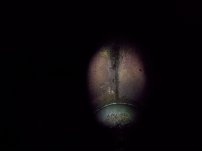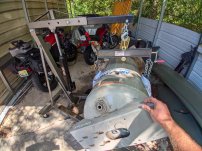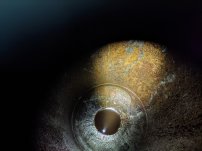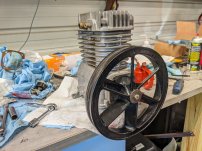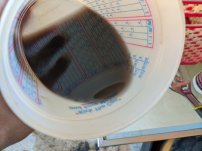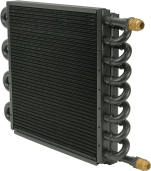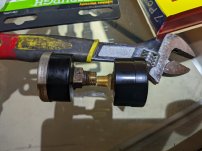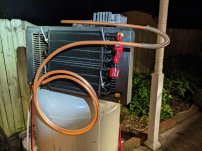ctag
Plastic
- Joined
- May 27, 2023
Hi all,
If this is the wrong place to post a rebuild log please let me know. I see most air compressor threads in Manufacturing Today > General, but Machine Reconditioning sounded more appropriate to me.
I recently bought my first air compressor, it's a 1995 6.5HP job. The guy I bought it from had an awesome garage shop, and said it worked fine but he wanted something more portable that could roll around. Fair enough, I'm wondering if that's the route I should have gone too.
I'm kicking myself a little, the decal on the tank was in perfect condition before I scraped it up while loading/unloading from the truck.
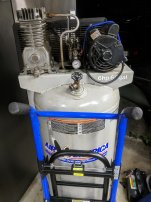
First thing I did when I got home was check the oil, and found some opaque slime that appeared to be about half the amount I'd have guessed the compressor should be filled to. Luckily I already wanted to do some tinkering, so I started pulling things apart.



The bearing material looks OK to me, but there's definitely some wear lines:
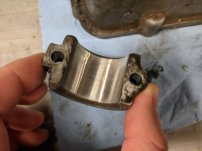
My understanding is that the crud on the valves can be caused by using automotive oil?

If this is the wrong place to post a rebuild log please let me know. I see most air compressor threads in Manufacturing Today > General, but Machine Reconditioning sounded more appropriate to me.
I recently bought my first air compressor, it's a 1995 6.5HP job. The guy I bought it from had an awesome garage shop, and said it worked fine but he wanted something more portable that could roll around. Fair enough, I'm wondering if that's the route I should have gone too.
I'm kicking myself a little, the decal on the tank was in perfect condition before I scraped it up while loading/unloading from the truck.

First thing I did when I got home was check the oil, and found some opaque slime that appeared to be about half the amount I'd have guessed the compressor should be filled to. Luckily I already wanted to do some tinkering, so I started pulling things apart.



The bearing material looks OK to me, but there's definitely some wear lines:

My understanding is that the crud on the valves can be caused by using automotive oil?






